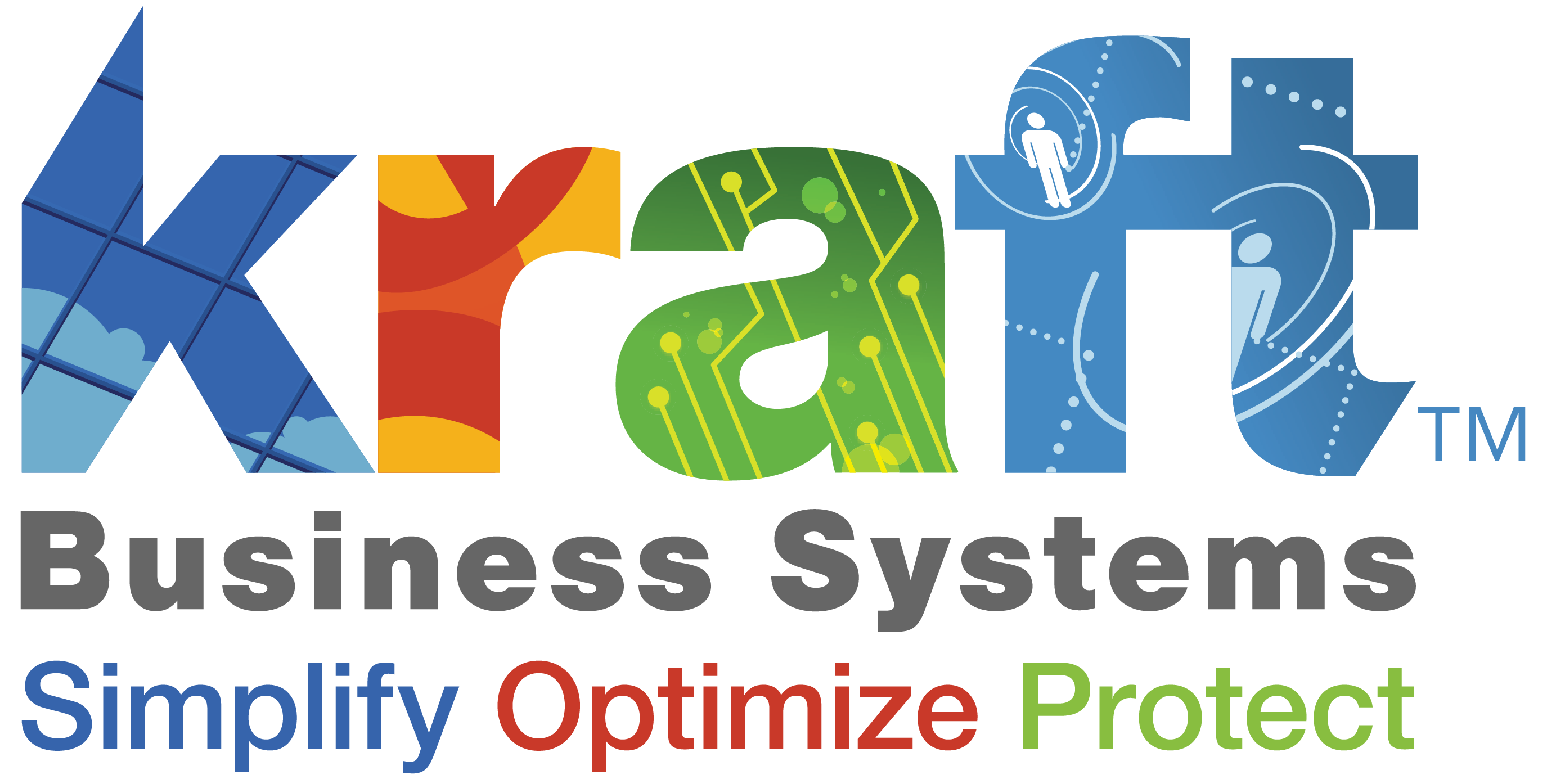Cybersecurity training for employees is essential, as 82% of data breaches involve employee error. Your team is a primary target for cybercriminals who find it easier to trick people than to break through firewalls. A single mistake can compromise your entire network.
Essential Training Components:
- Phishing awareness – Recognizing malicious emails and links
- Password security – Creating strong passphrases and using MFA
- Social engineering – Identifying manipulation tactics
- Data handling – Protecting sensitive information
- Incident reporting – Knowing when and how to report threats
Key Benefits:
- 70% fewer security incidents with regular training
- 3x return on investment or more
- Average 3x reduction in phishing email clicks
- Significant cost savings (average phishing attack costs $4.9 million)
While employees can be a vulnerability, training transforms them into your strongest defense. Companies with regular security awareness training experience 70% fewer security incidents because their workforce becomes a “human firewall.”
This proactive shift is crucial. When employees can spot threats, report suspicious activity, and follow security best practices, they become your first and most effective line of defense against cyber attacks.
Cybersecurity training for employees terminology:
Why Employee Cybersecurity Training is Your First Line of Defense
While sophisticated hacks make headlines, 74% of data breaches involve the human element. Most successful cyberattacks happen because an employee clicked the wrong link, used a weak password, or fell for a clever trick. Cybercriminals often target people over technology because it’s easier to trick someone into sharing credentials than to crack a firewall.
The financial impact is staggering, with the average phishing attack costing $4.9 million in 2023. For about 10% of small to medium businesses, a data breach can even lead to permanent closure.
Cybersecurity training for employees transforms this vulnerability into strength. When your team knows how to spot threats, they become your first line of defense, creating a Culture of Cybersecurity Awareness where security is everyone’s job. Compliance is another factor, as regulations like HIPAA and PCI DSS often mandate training, and cyber insurers increasingly require it for coverage.
At Kraft Business Systems, we help Michigan businesses from Grand Rapids to Traverse City tackle these challenges. Learn more in our guide on the Most Common Cybersecurity Threats.
Reducing Financial and Reputational Damage
The $4.9 million cost of phishing isn’t just theft; it includes preventing downtime, safeguarding brand reputation, and avoiding regulatory fines. Imagine a ransomware attack from one bad click—the resulting downtime, lost productivity, and recovery costs can be devastating.
The damage extends beyond finances. A breach erodes customer trust, which is difficult to rebuild and can send clients to your competitors. The regulatory consequences can also be severe, with significant fines and legal issues. That’s why we help businesses implement Steps to Prevent Cybersecurity Fraud before problems occur.
Empowering Employees to Become a Human Firewall
The concept of a human firewall is a key development in cybersecurity, as noted in Gartner’s 2024 trends. This approach turns employees from potential weak points into active defenders who report suspicious activity instead of ignoring it.
This proactive defense mindset is a game-changer. A trained workforce that can spot phishing, recognize social engineering, and use strong passwords eliminates easy targets for opportunistic cybercriminals.
The key is reporting incidents quickly and without fear of blame. A culture where false alarms are preferred over missed threats strengthens your ability to detect and respond before damage occurs. This also helps with Insider Threat Detection, as employees learn to recognize unusual behavior.
When you shift your workforce from potential victims to vigilant defenders, you build a more resilient organization that can adapt to emerging threats.
Key Topics for a Comprehensive Training Program
An effective cybersecurity training for employees program requires a well-rounded defense. Since cybercriminals use multiple attack vectors, your training must be comprehensive, covering the full spectrum of risks from malicious emails to physical security threats.
Key topics should include:
- Phishing awareness
- Malware and Ransomware
- Social engineering
- Password security
- Data handling
- Physical security
- Remote work security
- Incident reporting
For a deeper dive into specific threats, explore our article on 12 Types of Malware: Digital Threats to Your Business.
Recognizing and Responding to Phishing and Social Engineering
Phishing attacks have become highly sophisticated, mimicking legitimate companies with convincing branding. Training should focus on practical skills: carefully examining sender addresses, hovering over links before clicking, and recognizing that urgent messages are often traps.
Attacks can come in many forms:
- Vishing uses voice calls to trick victims. Our guide on Vishing: Meaning & How to Prevent Attack explains how these scams work.
- Smishing uses deceptive text messages with malicious links.
- Business Email Compromise (BEC) involves criminals impersonating executives or vendors to authorize fraudulent payments.
The key message is to verify requests through a separate, trusted channel. If an email from the CEO seems odd, call them directly. The Canadian Centre for Cyber Security offers helpful resources, such as their guide on GetCyberSafe Spotting Malicious Email Messages.
Mastering Password and Authentication Hygiene
Passwords are a crucial first line of defense, but users often take shortcuts that create vulnerabilities. Up to 80% of data breaches result from weak or stolen passwords.
- Create strong passphrases: A long, memorable phrase like “MyDogLovesCheeseburgers2024!” is stronger and easier to remember than a complex jumble like “P@ssw0rd123.”
- Avoid password reuse: Reusing passwords across multiple accounts is a major risk. A breach at one service can compromise all other accounts using the same password.
- Use Multi-Factor Authentication (MFA): MFA is a security superhero. It requires a second form of verification, stopping most attacks even if a password is stolen.
- Use password managers: These tools generate and store unique, strong passwords for every account, so employees only need to remember one master password.
Stolen credentials are often sold online, as detailed in our article Are Your Employees’ Credentials for Sale on the Dark Web?.
Securing Physical and Remote Work Environments
Today’s work environments extend beyond the office, each with unique security challenges. Training must cover both physical and remote security.
- Physical Security: Implement a clean desk policy and require employees to lock workstations when away. Also, train staff to prevent tailgating, where unauthorized individuals follow them into secure areas. Learn more in our article What is Tailgating Attack in Cybersecurity?.
- Remote Work Security: Using public Wi-Fi for work is risky. Home network security is also critical; training should cover securing routers and using VPNs. Finally, establish policies for device security, including personal devices used for work.
Remote work has fundamentally changed the security landscape. Our article How Employees Working from Home Pose Your Greatest Security Risk explores these challenges in detail.
How to Implement an Effective Cybersecurity Training for Employees
Implementing cybersecurity training for employees is an ongoing process, not a one-time task. Success requires leadership buy-in, a thorough needs assessment, and a continuous cycle of content development, training delivery, and results measurement.
For organizations just getting started, our guide on Cyber Security Training for Small Business provides practical, actionable advice.
Step 1: Assess Your Organization’s Unique Risks and Needs
Before starting, you must assess your unique risks. A law firm’s needs (data privacy) differ greatly from a manufacturer’s (protecting operational technology). Your training must reflect these specific challenges.
- Identify critical assets: Determine what data and systems are most valuable to your business (e.g., customer data, IP) and the threats they face.
- Define role-based training: Not everyone needs the same training. Tailor content to specific roles; for example, the finance team needs deep training on BEC scams, while front-desk staff should focus on physical security.
- Evaluate current knowledge: Use a pre-assessment to find and fill knowledge gaps.
- Set clear objectives: Define desired behavior changes, such as increased reporting of suspicious emails or better password practices, to measure success.
For businesses in Michigan, our article on Cybersecurity Best Practices for Michigan Businesses addresses regional compliance and threats.
Step 2: Develop or Select Your Cybersecurity training for employees Content
After your assessment, decide whether to build training content in-house or buy from a third-party provider. A hybrid approach often works best.
- In-house content allows for full customization to your specific systems and policies but requires significant internal expertise and ongoing maintenance to keep up with evolving threats.
- Third-party platforms provide engaging, regularly updated content and learning management systems. While less customizable, they offer predictable subscription costs and reduce the internal workload.
We recommend using third-party solutions for core cybersecurity training for employees and developing custom content for specific internal policies. This combines professional, updated content with targeted, in-house materials.
Excellent free resources are also available from the Canadian government’s GetCyberSafe Educate Your Employees on Cyber Safety and the U.S. government’s CISA Learning.
Step 3: Schedule and Deliver Engaging Cybersecurity training for employees
Effective delivery is as crucial as great content. To succeed, training must be engaging, relevant, and easy to schedule. Use multiple touchpoints to reinforce learning over time.
- Onboarding training: Integrate security training from day one to establish its importance for new hires.
- Annual refreshers: Combat evolving threats and knowledge decay with regular updates.
- Microlearning: Use short, 2-5 minute modules on specific topics. These are ideal for busy schedules and improve retention.
- Gamification: Use points and leaderboards to boost engagement and retention through friendly competition.
- Phishing simulations: Put theory into practice with simulated attacks. These tests reduce real-world clicks and allow for immediate remedial training.
- Just-in-time training: Provide relevant information exactly when needed, like a pop-up reminder about public Wi-Fi safety.
This multi-faceted approach makes training an integrated part of your security culture. For more strategies, see our guide on 15 Proven Ways to Protect Your Business from Cyberattacks.
Measuring the Success and ROI of Your Training Program
You’ve put in the effort to create a solid cybersecurity training for employees program. Now comes the million-dollar question: is it actually working? Without proper measurement, you’re essentially flying blind. The good news is that when done right, security awareness training delivers impressive returns—often 3x ROI or more. But to get there, you need to track the right metrics and understand what success looks like.
Think of measuring your training program like checking your car’s dashboard while driving. You wouldn’t just assume everything’s fine without looking at the speedometer, fuel gauge, or warning lights. Similarly, your cybersecurity training needs regular check-ups to ensure it’s steering your organization in the right direction.
The key is focusing on behavior change, not just knowledge retention. Anyone can memorize facts about phishing emails, but will they actually pause and think twice before clicking that suspicious link? That’s where the real value lies, and that’s what we need to measure.
For more context on preventing breaches through comprehensive strategies, check out our Data Breach Prevention Tips.
Tracking Key Metrics for Behavior Change
We’re not just teaching employees to pass a test—we want them to change how they behave every day. Here are the metrics that really matter when measuring the effectiveness of your training program.
Phishing simulation click rates are your most telling indicator. When you send out those fake phishing emails and fewer people click on them over time, you know your training is sinking in. It’s like watching your teenager finally remember to lock the front door—small victories that add up to big security wins.
Incident reporting rates tell an equally important story. You actually want this number to go up initially. When employees start reporting more suspicious emails or activities (even false alarms), it means they’re paying attention and feel comfortable speaking up. A security-aware culture encourages people to err on the side of caution.
Quiz and assessment scores give you a baseline understanding of knowledge retention. While these don’t tell the whole story, they help identify knowledge gaps that need addressing. Think of them as your training program’s report card.
Reduction in security incidents is the ultimate goal. Companies with regular training experience 70% fewer security incidents caused by human error. This metric directly translates to cost savings and reduced headaches for everyone involved.
User risk scores from advanced training platforms can help you identify which employees or departments need extra attention. It’s like having a GPS that shows you exactly where to focus your efforts.
Calculating the Return on Investment (ROI)
Calculating ROI for cybersecurity training for employees isn’t as complicated as it might seem. It’s really about comparing what you spend on training versus what you save by avoiding security disasters.
Cost of training vs. cost of a breach is the big picture calculation. $4.9 million average cost of a phishing attack? Even if your training prevents just one significant incident, you’ve likely paid for years of training programs. It’s like buying insurance—you hope you never need it, but you’re incredibly grateful when you do.
Reduced IT helpdesk tickets provide another measurable benefit. When employees stop clicking on malicious links or downloading sketchy attachments, your IT team spends less time cleaning up messes. They can focus on more strategic projects instead of playing digital janitor. This frees up valuable resources and reduces operational costs.
Improved compliance posture helps you avoid regulatory fines and penalties. Many industries require security awareness training, and demonstrating a robust program can save you from costly compliance violations. It’s much cheaper to invest in prevention than to pay fines after the fact.
Fewer security incidents create a ripple effect of savings. Less time spent on incident response, fewer legal fees, reduced downtime, and preserved reputation all contribute to your bottom line. When you consider that 70% reduction in incidents, the math becomes pretty compelling.
By actively implementing comprehensive training and Reducing Cybersecurity Risks with Data Minimization, businesses across Michigan can see tangible returns on their security investments. The key is being consistent, measuring what matters, and continuously improving your approach.
Conclusion
A strong cybersecurity defense is built on people, not just technology. At Kraft Business Systems, we’ve helped businesses across Michigan—from small teams in Bellaire to growing companies in Sterling Heights—use cybersecurity training for employees to transform organizations from vulnerable targets into resilient defenders.
Your employees hold the keys to your digital kingdom. Without training, they can be a liability; with training, they become your most vigilant guardians. This is an ongoing commitment that builds a strong security culture where everyone is responsible for protection.
Your human firewall is your most critical asset. A well-trained employee can stop an attack that technology might miss, shifting your team from the weakest link to the strongest defense. The data is clear: regular training leads to 70% fewer incidents and an ROI of over 3x, protecting your reputation, customer trust, and business continuity.
At Kraft Business Systems, we help you build comprehensive security strategies that put your people first. Whether you’re looking to strengthen your existing security posture or starting from scratch, we’re here to help.
Ready to turn your employees into your best defense? Check out our guide on Don’t Get Hacked: 5 Ways to Build a Rock-Solid Small Business IT for practical steps you can take today.
When you’re ready to take the next step, Partner with us for comprehensive Managed Cybersecurity Services and let us help you build a security culture that protects what matters most to your business.










